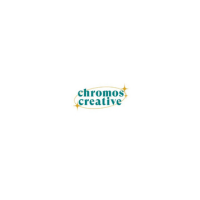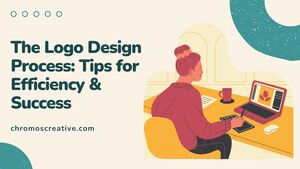The Logo Design Process: Tips for Efficiency & Success
Body
A well-designed logo is a vital component of a brand's identity and can significantly impact its success. It serves as a visual representation of the company's values, personality, and offerings. However, creating an effective logo involves a meticulous design process that requires careful consideration and planning. In this blog post, we will explore the logo design process and provide you with valuable tips for achieving efficiency and success.
Understanding the Brand and Its Target Audience
Before diving into the design process, it's crucial to thoroughly understand the brand and its target audience. Take the time to gather information about the company's mission, values, and unique selling points. Identify the target demographic and their preferences, which will help you create a logo that resonates with the intended audience.
Research and Inspiration
Research plays a pivotal role in the logo design process. Analyze the industry landscape, competitors' logos, and current design trends. This step will help you gain insights and avoid creating a logo that looks similar to existing ones. Seek inspiration from various sources such as design blogs, online galleries, and relevant design books.
Sketching and Concept Development
Once you have a solid understanding of the brand and gathered inspiration, it's time to start sketching ideas. Grab a pen and paper and let your creativity flow. Sketching allows you to explore different concepts and visual representations of the brand. Don't worry about perfection at this stage; focus on generating a wide range of ideas.
Digital Exploration
After sketching, it's time to translate your ideas into the digital realm. Use design software to create digital versions of your sketches. This stage allows you to refine your ideas, experiment with different shapes, fonts, and colors, and create multiple iterations of the logo.
Typography and Color Selection
Typography and color choices greatly influence the overall impact of a logo. Select fonts that align with the brand's personality and values. Experiment with different typefaces to find the perfect balance between legibility and uniqueness. Similarly, choose colors that evoke the desired emotions and reflect the brand's identity. Consider color psychology and how different hues can influence perception.
Simplify and Streamline
A successful logo is often simple, memorable, and versatile. Avoid overcrowding your design with unnecessary elements or complex details. Focus on creating a clean and straightforward logo that can be easily recognized and reproduced across various mediums. Strive for clarity and balance in your design.
Feedback and Iteration
Obtaining feedback is a crucial step in the logo design process. Share your designs with the client or a focus group and gather constructive criticism. Listen to their opinions and suggestions and iterate accordingly. This iterative approach ensures that the final design aligns with the brand's vision and resonates with its audience.
Presentation and Finalization
Once you have refined your design based on feedback, it's time to present the final logo to the client. Prepare a professional presentation that showcases the logo in different applications, such as business cards, signage, and digital platforms. Explain the rationale behind your design decisions and how the logo represents the brand effectively. Upon client approval, finalize the logo by providing them with the necessary file formats for future use.
Brand Guidelines and Usage Documentation
To ensure consistency in logo usage, create a comprehensive set of brand guidelines and usage documentation. These guidelines outline the correct usage of the logo, including clear specifications for size, color variations, and placement. Provide instructions on how to maintain the logo's integrity and prevent any unauthorized modifications.
Maintain a Long-term Relationship
Building a strong and long-lasting relationship with your clients is key to your success as a logo designer. Stay in touch with your clients, offer ongoing support, and be available for any future design needs or updates. By maintaining a positive relationship, you increase the likelihood of repeat business and referrals.
Keep Up with Design Trends
Design trends evolve over time, and it's important to stay updated to ensure your logo designs remain relevant and fresh. Follow design blogs, attend conferences, and engage with the design community to stay abreast of the latest trends and techniques. However, it's crucial to strike a balance between incorporating trends and maintaining timeless design principles.
Learn from Feedback and Experience
Every logo design project is an opportunity for growth and improvement. Pay attention to client feedback and learn from each project. Reflect on what worked well and what could be enhanced. Continuous learning and refinement of your design process will contribute to your overall efficiency and success as a logo designer.
In conclusion, the logo design process requires careful planning, research, and creativity. By understanding the brand and its target audience, conducting thorough research, sketching ideas, and refining them digitally, you can create a successful logo. Typography and color selection, simplification, and incorporating feedback are also essential steps.
Additionally, presenting the final logo professionally, creating brand guidelines, and maintaining a long-term relationship with clients are crucial for efficiency and success. By keeping up with design trends and learning from feedback and experience, you can continually improve your logo design skills. Remember, an effective logo has the power to elevate a brand's identity and contribute to its overall success.












Comments